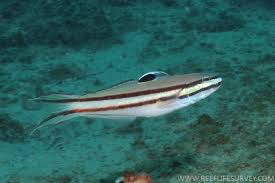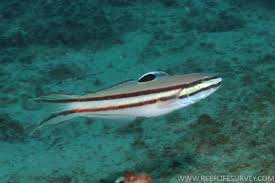Lined Glider
Lined Glider
check_circle Fast Shipping
check_circle Quality Products
check_circle Affordable Price
Reach out to us on ''available to order'' items via WhatsApp or email
Low stock: 2 left
Couldn't load pickup availability

Lined Glider
package_2
Product Description
Product Description
Railway Goby Overview
-
Common Names:
-
Railway Goby
-
Sleeper Banded Goby
-
Bullet Goby
-
Brownbarred Goby
-
-
Scientific Name: Amblygobius phalaena
-
Family: Gobiidae
-
Origin: Indo-Pacific – from the Red Sea to Western Pacific Islands
-
Size: Up to 5.5 inches (14 cm)
-
Lifespan: 3–5 years in captivity
-
Difficulty: Easy to Moderate
🌈 Appearance
-
Body Color: Pale tan or cream base color
-
Stripes: Distinctive horizontal brown or reddish bands along the body, resembling railway tracks (hence the name)
-
Face: Sometimes has a bluish tint with a pattern near the eyes
-
Mouth: Downturned, ideal for scooping sand
🏝️ Natural Habitat
-
Found in sandy lagoon areas, reef flats, and rubble zones
-
Lives in pairs or solitary, often near burrows under rocks
-
Constantly sifts sand to extract microfauna for food
🐠 Aquarium Care
Tank Requirements:
-
Minimum Tank Size: 30 gallons for a single, 55+ gallons for a pair
-
Substrate: Fine sand is essential — at least 2–3 inches deep
-
Aquascape:
-
Live rock for burrow support
-
Open sand bed for foraging
-
-
Lid Required: Yes — jump risk is high
Water Parameters:
-
Temperature: 74–80°F (23–27°C)
-
pH: 8.1–8.4
-
Salinity: 1.023–1.025
-
Nitrates: <20 ppm
🍽️ Diet
-
Feeding Type: Omnivore / Sand-sifter
-
Natural Diet: Consumes microfauna (copepods, worms) in sand
-
Captive Diet:
-
Frozen mysis and brine shrimp
-
Enriched frozen foods
-
Sinking pellets
-
Occasional live foods
-
-
Feeding Frequency: 1–2 times per day
-
Must be supplemented — sand alone is not enough in captivity
🤝 Behavior & Compatibility
-
Temperament: Peaceful and shy
-
Reef Safe: ✅ Yes — will not harm corals or most inverts
-
Tankmates:
-
Peaceful reef fish: clowns, gobies, cardinals, wrasses
-
Avoid large aggressive fish that may intimidate or outcompete
-
-
Burrower: Yes — may dig under rocks or corals
-
Sand Sifter: Constantly passes sand through its gills, aerating and cleaning it
✅ Pros
-
Functional — keeps sand bed clean and oxygenated
-
Peaceful and reef safe
-
Attractive stripes and natural behavior
-
Compatible with many peaceful reef species
-
Can help reduce detritus and algae on sand
❌ Cons
-
Can jump — tight-fitting lid required
-
May cover corals or rocks with sand while digging
-
Needs supplemental feeding — sand isn’t enough
-
May rearrange substrate and create caves/burrows
-
Sensitive to poor water quality early on
💡 Tips for Success
-
Acclimate slowly — can be sensitive to shipping stress
-
Feed near the substrate to ensure it gets food
-
Keep rocks stable — burrowing can destabilize loose rockwork
-
Provide extra feeding in tanks with little natural fauna
-
Secure all openings to prevent escapes
Summary
| Category | Details |
|---|---|
| Difficulty | Easy to Moderate |
| Temperament | Peaceful |
| Max Size | ~5.5 inches (14 cm) |
| Tank Size (Min) | 30 gallons (55+ for a pair) |
| Diet | Omnivore — sand sifter + supplements |
| Reef Safe | ✅ Yes |
| Sand Sifter | ✅ Constantly filters sand |
| Jump Risk | High — secure lid required |


